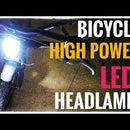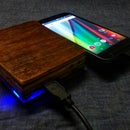Introduction: PCB ETCHING | TONER TRANSFER METHOD
Hello!!
In this instructables i will be teaching you how to etch a PCB using Toner Transfer Method. This method is one of the easiest and cheapest method for printing PCB at home for your hobby projects.
I have inserted the video of PCB Etching using toner transfer method. Please do check it out.
Step 1: MATERIALS REQUIRED
- Copper Clad Board
- Ferrous chloride ( PCB Etching solution )
- Dry Iron Box
- Permanent Markers
- OHP Sheets Or Photo Paper
- Acetone (Nail Polish Remover)
- Plastic or Glass Container
- Kitchen Scrub
Tools Required:
- Drilling Machine
- Hexa Blade
- 0.8mm - 1.0 mm drill bits
- Adhesive Tape
- Scissors
Step 2: Preparation of Clad Board
Copper when exposed to air forms a oxidation layer. Start the process by rubbing the clad board using kitchen scrub. You can also use Stainless Steel brush. Rub the board until the oxidation layer is removed and the board should look very lustrous (shiny).
Caution: Do Not over do this process because this may degrade the quality of PCB by decreasing the strenght of copper layer.
Step 3: Printing the Circuit Design on OHP Sheet
Print the circuit design on the Transparent OHP Sheets using LASER JET PRINTER . This process does not work using Ink Jet Printer. Do not mirror the Circuit Image while taking the printout.
Now paste the printed side of OHP sheet on the copper side of the Board. Secure it using the Adhesive Tape( Gum Tape). Make sure there are no air bubbles or dust while laying down the printed OHP sheet.
Step 4: Toner Transfer to PCB ( Transfer of Design on PCB)
Set the dry iron box to maximum temperature. The prepared PCB is kept on a flat surface and press and hold the iron on PCB for about 20-30 seconds.
Then rub the surface of PCB using the edge of Iron for 1 minute. Apply heat evenly on the Board for uniform transfer of toner ink from OHP to Copper layer.
This is the most fun part of the entire process but you have to be very careful. Do not over heat the board for long duration.
After that allow the board to cool down for a while(1 minute) in cold water. Once the board is cooled down, slowly remove the OHP Sheet very carefully.
If there are any lines missing, just mark the line using a Permanent marker.
If you don't have access to laser printer you cab design the whole PCB using permanent marker only by just drawing the required circuit lines in copper board.
Step 5: Etching Process __The Most Exiting Part :)
For the etching process follow the following steps carefully_
Safety First- Wear your eye protection, hand gloves and move the whole apparatus to well ventilated area.
- Take a plastic or glass container.
- Add required amount of ferrous chloride ( about 2-4 spoons) and dissolve it using 20-30 ml of cold water. U can also use the concentrated ferrous chloride directly on the board.
- Now dip the prepared Copper Board in the Solution.
- Keep agitating the mixture until the unwanted copper is dissolved into the solution.
- After this process the copper protected by toner ink is Undissolved and the rest is dissolved into the solution.
- Once its done rinse the PCB in water and dry it.
- The ink can be removed by using Acetone( Nail Polish Remover) or by using kitchen scrub.
- After this the PCB is ready for drilling.
- this process takes about 5-25 minutes depending on the concentration of solution.
CAUTION: Do Not use Metallic spoons and containers as the ferrous chloride is very corrosive and can dissolve almost all metals. Carry out this process in well ventilated area and do not inhale the fumes.
Step 6: Drilling and Finishing
The toner ink is removed and the board is again rinsed in water.
Then drill the holes for pads and vias according to required size using power drill or hand held PCB driller of your choice. The standard drill size for low power application is 0.8 mm or 1.00 mm.
Use solder flux while soldering for better performance and to avoid messing of excess solder as we have not applied Solder Mask on our PCB. The flux increases the affinity of solder towards copper.
Congratulations!! You have successfully printed a Circuit Board using toner transfer method.
If you come across any doubts please let me know in the comments section. I will try my best to help you out.
Published on :10 December 2016
Thankyou.
Sandesh Hegde (a.k.a THE TECHNOCRAT)
Email: sandesh.hs1234@gmail.com





